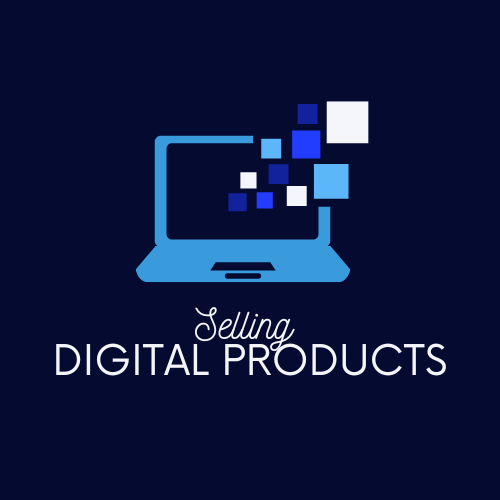Digital products are intangible products that can be downloaded or accessed online, such as software, eBooks, music, videos, courses, and other digital assets. These products are usually sold and distributed through digital channels, such as a website or online marketplace.
Digital products are becoming increasingly popular due to their convenience, low cost of production, and ease of distribution. They do not require physical production and can be easily replicated and distributed to a large audience. This makes them an attractive option for businesses, entrepreneurs, and content creators looking to monetize their ideas and expertise.
With the rise of e-commerce websites, digital products such as e-books, software, music, videos, courses, and webinars have become increasingly popular. The widespread use of the internet and digital platforms has led to a significant surge in demand for these products. As personal devices such as mobile phones and laptops have become ubiquitous, the demand for digital products has only increased. In fact, the pandemic and social distancing measures have further fueled the demand for digital products.
It has many advantages over physical products. They can be easily updated and improved, do not require inventory storage, and can be sold to a global audience. As a result, digital products offer a lucrative opportunity for businesses and individuals looking to expand their reach and increase their revenue.
Some Examples of Digital Products Are:
- eBooks (Electronic Books): These are digital books that can be downloaded and read on an e-reader, tablet, or computer. E-books are typically available in digital formats, such as PDF, EPUB, MOBI, or AZW, and can be downloaded and stored on a device or accessed online.
- Software: Software is a set of instructions or programs that tell a computer what is to be performed or executed. It refers to a collection of programs, data, and other related documents that are used to operate computer systems and perform specific tasks.
- Music: Digital music refers to music that has been encoded in a digital format and stored on electronic devices such as computers, smartphones, or portable music players. Digital music files are created using various audio files formats such as MP3, AAC, WAV, FLAC, and many others.
- Videos: Digital video content that has been encoded in a digital format and can be stored, transmitted, and displayed using electronic devices such as computers, smartphones, or televisions.
- Courses: Online courses refer to courses of study that are offered over the internet, allowing students to access educational content and interact with instructors and other students virtually. Online courses are delivered through various platforms, such as learning management systems (LMS), video conferencing tools, and web-based applications. online courses provide users with to access courses anywhere around the world with the flexibility of time.
- Graphics and Design Assets: These are digital design assets, such as stock photos, graphics, and templates, that can be downloaded and used in various design projects.
- Webinars: Webinars are online seminars or presentations that are conducted in real time over the internet. They allow presenters to communicate with a remote audience using video conferencing, screen sharing, and other collaborative tools. Webinars can be used for a variety of purposes, such as training, marketing, education, and professional development.
Webinars typically require participants to register in advance and provide an email address to receive a link to access the webinar. Once registered, participants can join the webinar from their computer or mobile device using a web browser or a specialized application. Webinars are typically delivered through a dedicated webinar platform, which provides the necessary tools for creating and managing webinars. Some popular webinar platforms include Zoom, GoToWebinar, and WebEx. Webinars can be live or recorded for on-demand viewing.
How to Sell Digital Products?
Selling digital products can be a lucrative way to generate revenue and build a business online. Here are some general steps to follow when selling digital products:
- Determine What Digital Products to Sell: Choose a product that you are passionate about and that you believe will meet a need or solve a problem for your target audience. Digital products can include ebooks, online courses, software, music, videos, graphics, templates, and more.
- Create Your Digital Product: Use the appropriate tools and software to create a high-quality digital product that is visually appealing, informative, and easy to use. You may want to consider outsourcing certain tasks, such as graphic design or copywriting, to ensure the quality of your product.
- Choose a Platform to Sell Your Product: There are many platforms available for selling digital products, such as Amazon, Etsy, Gumroad, Teachable, and more. Choose a platform that aligns with your product and your target audience.
- Price Setting: Determine the price of your product based on its value, your production costs, and the competition in the market.
- Market Your Product: Use various marketing channels to promote your product, such as social media, email marketing, content marketing, and advertising. Use customer feedback and reviews to improve your product and increase its visibility.
- Deliver Your Product: Once someone purchases your product, deliver it to them through the chosen platform. Ensure that the delivery process is smooth and easy for your customers.
- Provide Customer Support: Provide excellent customer support to your customers by answering questions, providing technical support, and addressing any issues that may arise. Take feedback from the customer for future reference.
By following these steps and continuously improving your product and marketing strategy, you can build a successful business selling digital products.
Advantages of Selling Digital Products
Selling digital products has become increasingly popular in recent years, and for good reason. Here are some of the benefits of selling digital products:
- Low Overhead Costs: Digital products have very low overhead costs because they do not require physical production, shipping, or storage. This means that once the digital product is created, it can be sold repeatedly without any additional costs.
- High-Profit Margins: Since digital products have low overhead costs, they often have high-profit margins. This makes them an attractive option for entrepreneurs and small businesses who are looking to generate income without a significant investment.
- Global Reach: Digital products can be sold to anyone in the world with an internet connection, which means that they have a potentially unlimited customer base. This makes it easier to scale a business and reach new markets without having to invest in physical infrastructure.
- Easy to Update: Digital products can be updated quickly and easily, which means that they can remain relevant and useful to customers over time. This can help to increase customer loyalty and generate repeat business.
- No Physical Inventory: With digital products, there is no need to maintain physical inventory or worry about stock management. This means that there is no risk of overstocking or running out of inventory, which can save time and money.
- Environment Friendly: Selling digital products is a more environmentally friendly option compared to physical products, as it eliminates the need for packaging, shipping, and storage, which can have a significant impact on the environment.
Selling digital products offers a range of benefits that can help businesses to increase profitability, reach new markets, and reduce their environmental impact.
Conclusion- Digital products have become increasingly popular due to their convenience, accessibility, and cost-effectiveness. They can be easily distributed and sold online, and they don’t require any physical storage or shipping. Many entrepreneurs and businesses have found success in creating and selling digital products, as they offer an opportunity to monetize their expertise and create passive income streams. Digital products have many advantages also.
Author Bio– Anushree Jain. A digital Marketing intern with a background of Human Resource and Psychology. I have experience in teaching Psychology and now I am seeking a Digital marketing position to expand my skills. In addition to my professional aspirations, I’m also a lecturer and homemaker.

